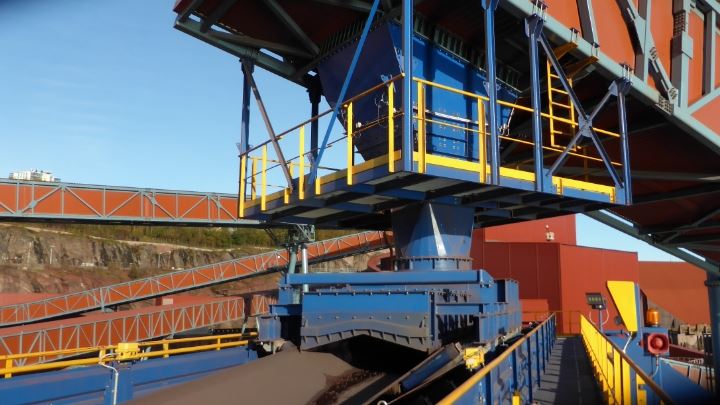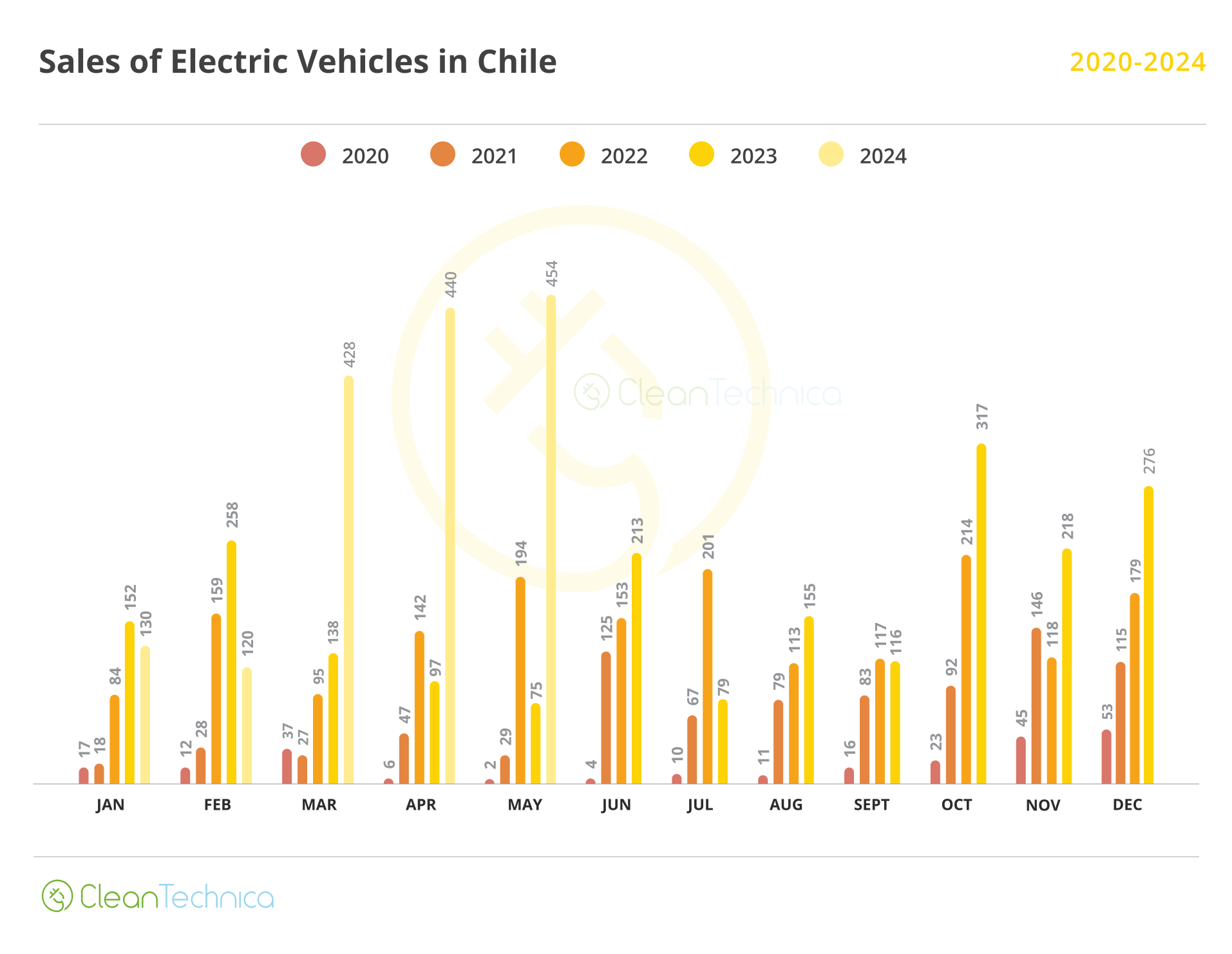As global organizations chart a path to net zero, many are looking to the next frontier of emissions reduction: “Scope 3” emissions. These emissions are not directly produced by a company’s operations, but embedded in its supply chain. They account for the vast majority of companies’ emissions, and a significant portion are generated from supply chain and logistics activities—in particular, from the combination of road and ocean freight.
In total, logistics emissions from freight and warehousing account for at least 7 percent of global greenhouse gas (GHG) emissions. Any successful path to net zero will thus need to address them as part of a company’s holistic environmental, social, and governance (ESG) strategy (Exhibit 1).

Demand grows for green logistics, but challenges remain
Stakeholders are increasingly holding companies to their GHG commitments. In June 2023, 46 percent of surveyed global institutional investors listed navigating the low-carbon transition as their most important investment priority in the next three years.
Consumers are also increasingly favoring sustainable products, with more than 65 percent of US-based survey recipients saying they actively seek out sustainable products, and around 80 percent willing to pay a premium for them.
Companies across sectors are beginning to think about lower-carbon shipping in response to these dynamics. McKinsey surveyed 250 global shippers and providers and found that the majority of companies have started integrating green shipping into their logistics programs. Importantly, more than seven in ten said they would be willing to pay more for green shipping products (Exhibit 2).

This demand may translate into real dollars in the coming years. McKinsey analysis indicates that demand for green logistics could reach an estimated $350 billion in 2030, comprising around 15 percent of total global logistics spend and conservatively not accounting for potential price premiums on green shipping (Exhibit 3).

While the future of green logistics is promising, progress to date has been limited. Nearly half of companies surveyed by McKinsey have no decarbonization goals in place. Only a quarter have both set goals and believe they have the means to achieve them; a similar number admit they don’t believe they can reach their carbon-reduction targets (Exhibit 4).

As customer demands change, regulatory pressures ramp up and stakeholder expectations increase. Businesses that fail to decarbonize may risk falling behind while others pull further ahead in their efforts to “go green.”
With only about a quarter of global shippers and providers believing they have appropriate initiatives in place to achieve stated decarbonization goals, there is a clear disconnect between claimed willingness to pay for carbon-neutral shipping and demonstrated action.
There are several structural and perceived obstacles to decarbonizing logistics:
First-mover hesitancy. While shippers have set logistics decarbonization targets and are, in principle, willing to pay for low-carbon shipping, there is limited high-quality, widely available supply of low-carbon shipping today. From a carrier perspective, building low-carbon shipping supply requires capital-intensive investment and new knowledge and capabilities. Shippers, for their part, are hesitant to commit financial resources to underwrite electric fleets, with near-term uncertainty around operational viability or where assets are not immediately available (for example, because commercial road charging infrastructure is not yet in place).
Uncertain new technologies. New decarbonization technologies present a range of challenges beyond cost, such as disposal of residual assets, strains on OEM capacity, production-capacity limits on biofuels, and uncertainty around the total cost of ownership (TCO). Many incumbent companies are testing low-carbon technologies but are reluctant to scale until there is greater technological certainty.
Sector and company-specific considerations. Individual logistics use cases can complicate planning and follow-through on net-zero goals. For example, the US utility industry faces broad, state-level decarbonization policy targets in addition to company-level net-zero goals. At the same time, utility company fleets face unique constraints such as hurricane preparedness, where company vehicles must idle for up to 24 hours in storm locations—which current charging infrastructure and fleets cannot yet support.
For ocean shipping with its higher energy needs, battery power is not a realistic solution. Energy-dense sustainable fuels like methanol, ammonia, or liquified hydrogen are necessary, but much of the technology is not yet available at scale. For example, ammonia-powered engines and bunkering are still in development, and fuel cells are not demonstrated in scaled marine applications. The supply of sustainable fuels in major global ports is also not yet available. These uncertainties are leading some shipping companies to delay investment decisions in new fleets.
Viable routes to decarbonization exist today
Despite the challenges, viable routes to logistics decarbonization are opening up as technology solutions become more widespread and affordable. McKinsey analysis indicates that a 40 to 50 percent reduction in logistics emissions by 2030 is achievable using technology that is available today (Exhibit 5).

In many cases, these emission-reduction activities can lead to cost savings, too—helping companies execute a phased decarbonization plan through immediate action and longer-term investments.
“Act now” decarbonization levers emphasize efficiency with current technologies
In the short term, there are proven, cost-effective decarbonization levers that can be pulled today. Actioning these opportunities starts by taking a holistic and analytical view of the supply chain to minimize distances traveled and improve emissions efficiency per mile.
Reducing distances traveled begins with network redesign. This requires a detailed, data-driven understanding of current warehouse or asset locations and associated relocation costs, demand forecasting and scenario planning, and operating costs.
A decision model can evaluate both costs and emissions to inform structural and operational decisions—for example, relocating or expanding facilities to optimize the manufacturing and warehouse footprint, balancing make-versus-buy decisions, and reallocating customers to best-fit warehouse locations. At one US food and agriculture company, for example, a network footprint analysis reduced emissions by 18 percent by consolidating 53 sites to seven, saving nearly eight million metric tonnes of CO2 equivalent emissions.
Warehouses can be decarbonized by reducing overall energy demands and working toward emissions-neutral, self-sufficient operations with closed-loop systems. For example, GLS is operating a self-sufficient, emissions-free warehouse in Essen with near-closed resource cycles for air, water, and electricity through photovoltaic and battery storage systems. Tactically, this first includes investing in high-volume low-speed fans and lighting and temperature sensors; enhancing the building envelope to retain energy; deploying on-site renewables; and using electric equipment. Toyota, meanwhile, has brought to market zero-emissions forklifts powered by a range of options including lithium-ion batteries and hydrogen in a move that also reduces the overall life cycle cost of forklift usage. In combination, these levers can lower emissions and reduce operating expenditure by 40 percent in the near term. In the medium term, cost-effective, emissions-free operations are possible with existing technology.
To reduce miles traveled, companies can combine load and routing improvements with optimized network locations. Broadly, this entails making improved data-driven decisions to keep vehicles full while reducing unnecessary miles. For example, creating routes that utilize back-haul matching—returning cargo from point B to A—and multiday routing can reduce “empty miles” in which vehicles travel without cargo. Failure to capitalize on these approaches could result in a 10 to 30 percent larger fleet than needed.
On the efficiency side, shifting or mixing transport modes is often the fastest way to achieve cost and carbon reductions today; compared to air freight, road freight is more than five times more emissions efficient, and rail and ocean shipping are seven to 20 times more efficient still, depending on volume. In one instance, an oil and gas player with a large truck fleet traveling long-distance routes made huge carbon and cost-efficiency gains by loading hundreds of freight containers onto diesel trains, reducing overall net annual emissions by around 280 kilotons—the equivalent of taking more than 60,000 cars off the road per year.
Longer-term solutions with new-but-proven technology
For longer-term levers using new-but-proven technology, large private fleets and carriers are already investing in low-carbon shipping and related infrastructure. Maersk, for example, is transitioning its ocean shipping fleet to green fuels, with 26 vessels commissioned to run on green methanol. CMA CGM has integrated transitional fuels such as bioliquefied natural gas (LNG). ABB recently announced an order for Samskip Group’s hydrogen-powered 135-meter vessels, and Berge Bulk has ordered two dual-fuel dry bulk carriers capable of running on ammonia.
Carriers are also seeking collaborative partnerships. Maersk and CMA CGM, for example, have announced they will join forces to accelerate shipping decarbonization. Initial actions will include analyzing green-fuel life cycles, setting a framework for mass production of green methane and green methanol, and preparing ports for green-fuel safety and bunkering, including hydrogen infrastructure. CMB.TECH is in the final stages of commissioning the first hydrogen dual-fuel tugboat—a critical unlock for decarbonizing ports.
On land—where road freight accounts for 53 percent of global-trade-related transport emissions—major organizations are also investing. For example, Sysco, which aims to add 2,800 electric trucks to its US fleet by 2030, has unveiled its first heavy-duty electric vehicle (EV) hub, which will eventually support the charging of 40 heavy-duty trucks and 40 refrigerated trailers. PepsiCo has deployed 21 Tesla Semi trucks, with three dedicated to long-haul routes and has plans to expand charging depots and routes. Walmart Canada used a phased R&D and pilot approach across several technologies to overcome concerns regarding cold winter temperatures on low-carbon technology and has now invested in three Freightliner eCascadia electric semi-trucks for its Surrey grocery distribution center.
These initiatives from industry leaders signal to other carriers the current opportunities to invest in low-carbon shipping, as well as the risk of falling behind. Shippers that invest in green solutions now can position themselves to meet changing regulations and increased stakeholder pressure while unlocking “early-mover advantage” to capture growing customer willingness to pay for green shipping.
The potential for higher price premiums, customer growth, penalty avoidance, and early learnings on the operational use of emerging technologies could help offset the additional investments needed to decarbonize using newer technologies.
Getting started: How to begin the decarbonization journey
There are five key actions firms can take right now to begin their logistics decarbonization journeys:
1. Baseline logistics emissions and set targets
Robust emissions baselining, target-setting, and tracking are the foundation of any effective decarbonization effort. This activity enables companies to measure progress against concrete goals, achieve evidence-based verification, design tailored solutions, and tell a compelling story to investors, customers, and other stakeholders.
Emissions baselining involves analyzing data on activity and emission factors based on the GHG Protocol—an international standard for reporting emissions. Optimally, emissions baselining should tie directly to ongoing sensor-based emissions measurement, given that data precision will become necessary as new net-zero norms and regulations are released.
When setting targets, it is important to follow established GHG Protocol standards to align with future regulations and stakeholder expectations. The Science Based Targets Initiative (SBTi)—the leading standard for net-zero targets—released specific guidance in 2021 for trucking and ocean-shipping decarbonization targets to achieve the 1.5°C ambition of the UN Global Compact. The guidance calls for more stringent tracking of vessel and truck type, vessel size category, base-year emissions, and base- and target-year activity.
2. Stand up corporate emissions governance
A structured governance approach is critical to developing a consistent focus on initiatives and the agility to overcome inevitable challenges.
This can take the form of a stand-alone decarbonization office, or be part of an existing transformation office. This office can include plans for effective internal and external communication, education and change management for implementation, clear decision principles, budgets tied to headline targets, and a clear hierarchy of organizational governance structure. It can also include category metrics and KPIs defined at a granular level, tied to the emissions measurement system.
Stronger standards around emissions tracking support tangible KPIs and target milestones. For example, one postal organization developed dynamic logistics-emissions-based KPI dashboards and detailed delivery road maps, allowing for targeted interventions to achieve a net-present-value positive decarbonization pathway compliant with SBTi’s 1.5°C goal.
3. Build and execute a portfolio of initial decarbonization initiatives through 2030
Building out a detailed set of actionable, short- and medium-term decarbonization initiatives is critical to kickstart logistics decarbonization, demonstrate cost-effectiveness, and build momentum for the longer journey.
Mature technologies and approaches comprise the backbone of initial initiatives: network redesign, routing and load optimization, mode mix, and warehouse efficiency. Getting started requires a dedicated, resourced diagnostic to holistically understand a company’s supply chain operations, cost drivers, and sources of emissions across internally managed fleets and facilities and third-party suppliers. This enables end-to-end network optimization opportunities, organized by prioritized actions with favorable ROIs and emissions-reduction impacts.
Ideally, initiatives should be actionable, embedded in a transformation process, and tied to clear and specific decarbonization milestones and KPIs.
4. Understand and monitor new-but-proven technologies and make targeted investments
On land, the most significant new-but-proven technology is electrification. Electric medium- and heavy-duty trucks are projected to achieve TCO parity by mid-decade and near 2030, respectively., McKinsey, October 2023. Alternative fuels tail closely behind, with hydrogen estimated to reach TCO parity for all vehicles—including heavy-duty trucks—by 2030. Urgent action is needed in planning and implementing EV charging rollout at scale to reach regulatory requirements.
For technologies not yet at cost parity, monitoring government action can enable quick pivots when opportunities arise. In July 2023, the European Council adopted a new round of “Fit for 55” laws incentivizing alternative-fuels infrastructure, including a voluntary pooling mechanism (ships may combine their compliance balances with other ships) and requirements for ports to provide shoreside electricity for certain vessels by 2030 and airports to provide electricity to stationary aircraft by 2025. This can make investments in new-but-proven technologies at scale more certain through both direct incentives and required supporting infrastructure.
A forward-looking policy perspective can also make investment decisions easier. One medium-sized vessel operator working in environmentally sensitive areas gained the certainty needed to invest in next-generation propulsion systems after analyzing upcoming regulatory frameworks, pathways to compliance, and the associated cost curves.
In hard-to-abate sectors like air, monitoring incentives and regulations is even more critical. One major air-cargo organization had ambitious targets to use 30 to 35 percent sustainable aviation fuel across its fleet and acted quickly to capture the growing green market through Scope 3 certificates. Operating similarly to carbon credits, this financial instrument allowed the company to receive funds in exchange for emissions-reduction certificates and helped alleviate the multibillion-dollar upfront investment.
This lever is becoming more broadly available, as the Environmental Defense Fund has partnered with Sustainable Aviation Buyers’ Alliance and Rocky Mountain Institute to launch a new registry tool at COP 28 to facilitate purchase of sustainable aviation fuel credits (SAFc) with transparency and verified recording for reporting. In the United States, the Department of Energy has specific incentives for SAF producers based on the Inflation Reduction Act.
The actions of major logistics organizations can indicate broader trends in emerging technologies and relevant TCO cost curves, too. In ocean shipping, for example, the port of Los Angeles is partnering with Nagoya Port Authority to create a green shipping corridor through encouraging the use and promotion of low- and zero-carbon ships and fuels. Cargill, BAR Technologies, and Yara Marine are collaborating to test wind-powered cargo ships with “WindWings” that can save an estimated 30 percent on fuel for new-build ships—approximately 1.5 tons of fuel per day. These WindWings can also be retrofitted on existing ships.
On land, leading shippers have also taken action, with Amazon expected to take delivery of more than 100,000 electric vans by 2030. Schneider National, one of the leading carriers in North America, is already operating around 100 class 8 (heavy-duty) BEVs in Southern California, aiming to reduce GHG emissions by 60 percent per mile by 2035. Walmart Canada invested in three Freightliner eCascadia electric semi-trucks for its Surrey grocery distribution center, which also includes sustainable features like HVAC systems designed to reclaim rejected refrigeration system heat for under-floor heating and a plan to become zero-waste.
Identifying such opportunities, trends, and emerging technologies can help shape business strategy and investment.
5. Consider how to build a green business and gain early-mover advantage
Developing an adjacent or new green business can be both a defensive move and lucrative opportunity. McKinsey regularly convenes Green Business Building Summits, such as the North American Summit in San Francisco in February each year. A few guiding principles shared with participants include the following:
- Set clear and ambitious targets.Stake a clear goal to allow for an organization-wide vision.
- Secure a path to cost advantage and financing excellence. Understand the scale breakpoint for cost competitiveness of new technologies to reach viability quickly and predictably. Explore leveraging project finance, securing purchase agreements, using blended finance models, or engaging in multistakeholder-funded research, development, and demonstration (RD&D) programs.
- Gain committed captive demand before scaling.Before physically scaling, secure captive demand—as Swedish battery manufacturer Northvolt did with BMW, Scania, Volvo Cars, and Volkswagen Group before a five-billion-dollar expansion to its gigafactory.
- Seek business ecosystems and alliances. Green business building often focuses on one step in an emerging value chain but requires the collaborative buildout of the full value chain to unlock value. These alliances can create a positive feedback cycle in which players start gravitating toward the ecosystem as technology is proven and a financial underpinning solidifies. For example, Maersk entered a strategic partnership with six leading companies to source 700,000 metric tonnes per year of green methanol by 2025.
With looming regulations and rising stakeholder pressure, now is the time to turn net-zero logistics aspirations into action. Companies can think more broadly about their own decarbonization journeys and leverage a broad range of interventions to get to net zero, with a mix of mature and new-but-proven technologies and robust emissions tracking.
Each company in logistics, whether a buyer or operator, faces the complex decision of when and how to decarbonize. Leaders in their industries are seizing the initiative—putting them in the driver’s seat for quicker decarbonization and potential early-mover advantage.




